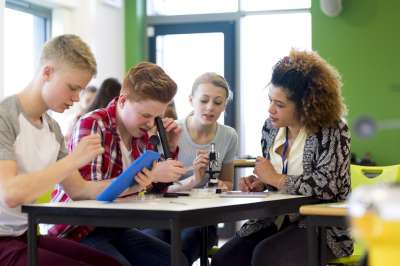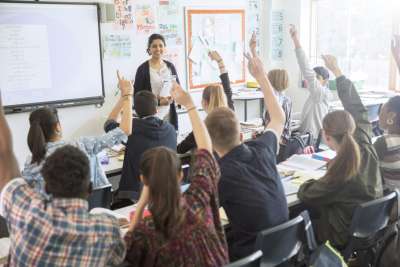Students learn more easily when they have a desire to learn
Discover the laws of learning and how students use the knowledge they acquire in the classroom. New teachers will find this advice particularly valuable, especially for back to school.Acquiring and Integrating Knowledge
Jabberwocky
A graphic organizer is a chart, outline, or web of ideas or concepts organized into groups or categories. For example, a nutrition graphic organizer might have the word Food written in the center of a sheet of paper. Around that key term would be categories of food such as Fruit, Vegetables, Dairy Products, and Grains. Around each of those categories would be written selected examples. The category of Fruit might have plums, cherries, apricots, and apples written around it. A graphic organizer illustrates how ideas are related to each other.
We know that students build new knowledge by relating it to prior learning and experience. Additionally, we know there are different types of knowledge students can learn. This knowledge is best learned by making connections between what is known and what is to be learned.
Here are some suggested classroom behaviors and practices:
Help students understand what it means to construct meaning.
Have students use graphic organizers to organize information.
Have students create pictorial representations of information.
Help students construct models.
Point out common errors and pitfalls.
Help students set up a practice schedule.
Extending and Refining Knowledge
For learning to be effective and meaningful, students should be provided with opportunities to use knowledge in practical situations. Processing knowledge for greater understanding can be done through activities designed to help them apply that knowledge.
Try some of these classroom behaviors and practices:
Compare. How are these things alike?
Classify. Into what groups could you organize these things?
Induce. Based on this information, what is the likely conclusion?
Deduct. What predictions can you make, or what conclusions can you draw?
Analyze errors. How is this information misleading?
Construct support. What is an argument that will support this claim?
Abstract. What is the general pattern underlying this information?
Analyze perspectives. What is the reasoning behind this perspective?
Jabberwocky
Analyzing the parts of a system and the manner in which they interact is called systems analysis.
Using Knowledge Meaningfully
Students learn best when they need knowledge to accomplish a goal they consider important. Six kinds of thinking processes can be used to encourage students to use knowledge meaningfully:
Decision-making
Problem-solving
Invention
Experimental inquiry
Investigation
Systems analysis
Productive Habits of Mind
Teachers can help students develop the mental habits that will enable them to learn on their own. Instruction to foster habits of mind includes both short-term and long-term practices.
Here are some suggested classroom behaviors and practices:
Think critically. Be and see accurately. Be open-minded.
Think creatively. Push the limits of one's knowledge. Find new ways of looking at a situation.
Self-regulate. Be aware of one's own thinking. Evaluate the effectiveness of one's own actions.

















